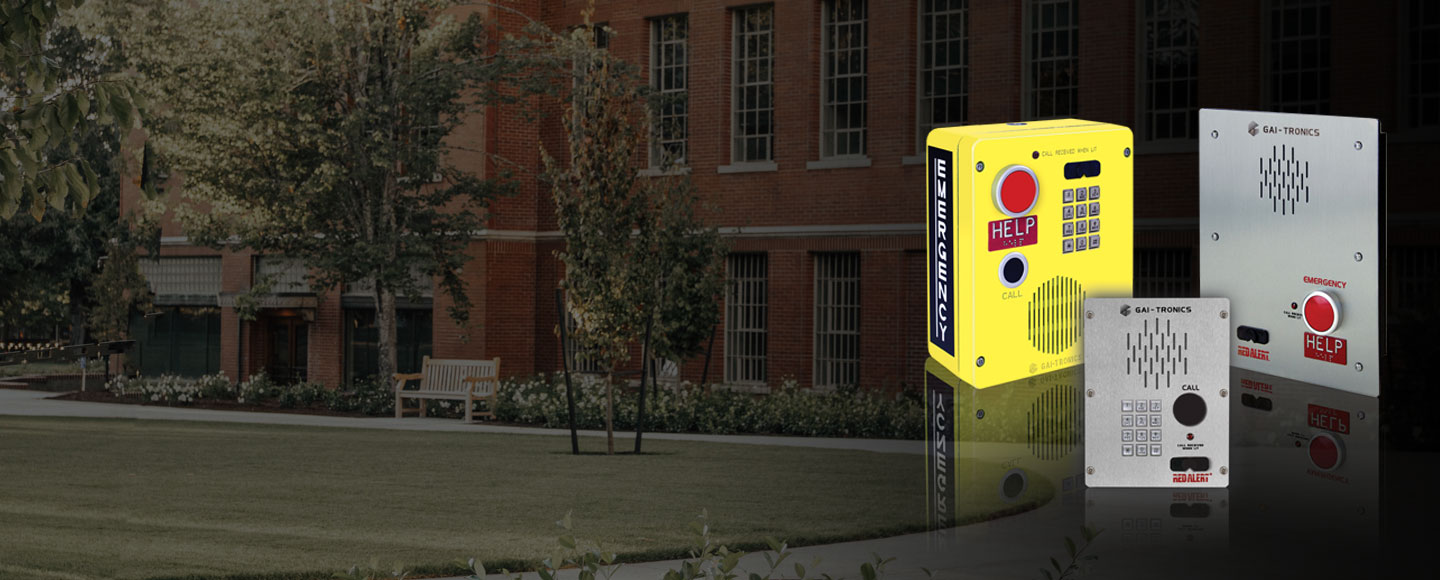Voice: The Key to Emergency Communications Success
Today’s campuses utilize a wide variety of methods to communicate to their students, staff and visitors. From digital methods to traditional methods, it’s difficult to identify which method of communication is most effective in delivering your message during an emergency. Experts in the telecom industry agree that a layered security approach is best to ensure that everyone on campus receives the message. You may be wondering, “what is the key to having a reliable emergency communications system?” The answer is simple – voice.
In today’s age of technology, communications have expanded in ways no one could have imagined even 25 years ago. Social media, email, and texting lead the way in today’s general communications but must take a back seat to the spoken word when it comes to emergency communications. This is particularly important when the audience may be comprised of individuals who may infrequently visit the system’s coverage area. Whether programmed or live, audible voice is the core of any Emergency Communication System (ECS).
The utilization of voice in an ECS can be implemented in various ways. One popular method of utilizing voice on campus is by broadcasting over loudspeakers for wide or local area coverage. This is considered a one-way broadcast and conveys a message, addressing both outdoor and indoor areas. Outdoor areas may use high-power overhead speakers, where there is little structural opposition to sound waves, or ground coverage with low power speakers. The ability to address different areas simultaneously, with possibly needing to convey different messages, is crucial when building a successful Emergency Communication System.
Any ECS needs to have a well-rounded approach to conveying important messages. Broadcasted alarm tones or strobes flashing should not be disregarded, regardless of the voice system design. An alarm tone blast from an overhead speaker or flashing strobes activated before a voice message transmission occurs may serve as an “attention getter” or warning that in important message is about to be broadcasted. Using these different devices in concert with each other will result in the best coverage for emergency situations. Combining an ECS with other notification systems: signage, reverse 911, email, texting, etc., provides a desired layered approach for wide-area notification during emergency situations.
When considering Emergency communications in a mass notification system for any type of environment, the use of broadcasted audio requires no pre-conceived expectations or planning. With proper speaker layout and coverage, a broadcasted message will reach everyone, no matter where they are or what they are doing. The message should be head easily during a person’s daily routine. Requires no pre-conceived expectations or planning. The ability to conduct regular, daily activities and still receive a notification is imperative. One should not be required to look in a specific direction for lights or signage, be sitting in front of a PC, or even carrying a mobile device. One can simply conduct their daily activities in a normal fashion. With proper speaker layout and coverage, a broadcasted message will reach everyone, no matter where they are or what they are doing. The message should be head easily during a person’s daily routine.
Two-way voice is another method of communicating during emergency situations. Two-way voice communications occur between two people at different locations and can be processed in either a telephone or intercom format, analog or IP. These formats in both hands-free and handset designs are readily available.
Compared to general, wide area public address broadcasts, two-way voice communications are related to a specific, individual or point-to-point scenario. Devices used for these applications are typically designed to call or otherwise connect with a designated location such as a security office or 911. Devices used for these applications are typically designed to call or otherwise connect with a designated location such as a security office or 911.
A frequently asked question is “why do we need two-way emergency communication devices when most people carry a mobile device?” Some answers include:
- Emergency communication devices are a constant. They are a stationary resource to those working and living in the coverage area; always at the same place. They are a place to go for help without worrying about a cell phone that could be lost, dropped, stolen, forgotten, or locking in a car. The more active the person is, the more important this becomes. Simply walk or run to a known location typically identified with a blue light.
- Cell phones can be dropped or mishandled, particularly when running ore exercising outdoors.
- Cell network services are not always available, particularly during storms or in certain coverage areas.
Although emergency broadcasts and two-way emergency communications typically operate separately, they are often combined in shared mounting arrangements to address multiple facets of the ECS. Education and business campuses often install communication towers that include both the two-way device and the emergency broadcast speakers. Add to this arrangement a blue flashing strobe and a complete emergency communication station is created. Justification for installing a tower just for two-way communications can be difficult to realize. This dual-purpose design provides cost justification for installing the tower, but why stop there? You can add CCTV and a WiFi hotspot for additional cost justification and enhanced communication.

